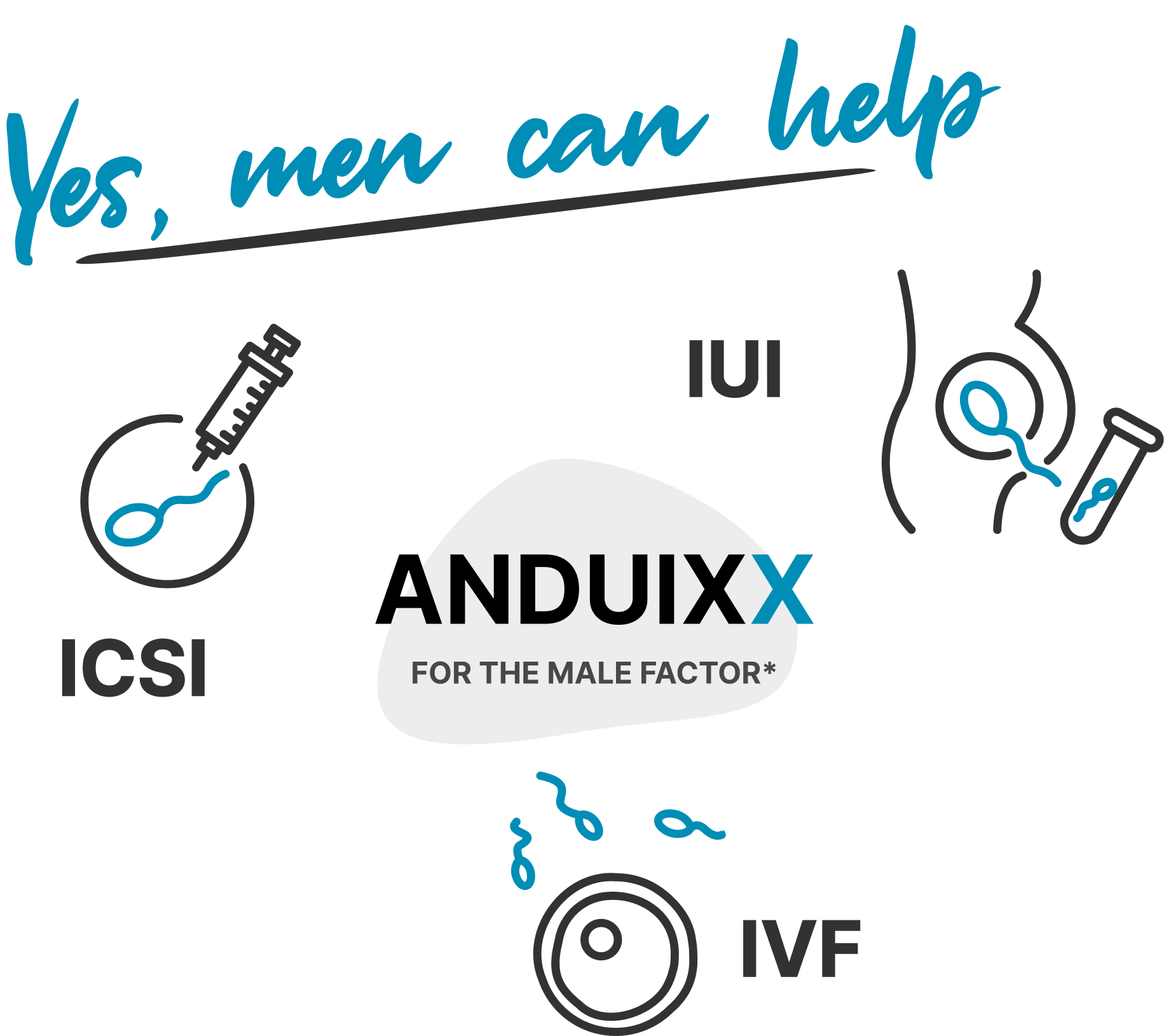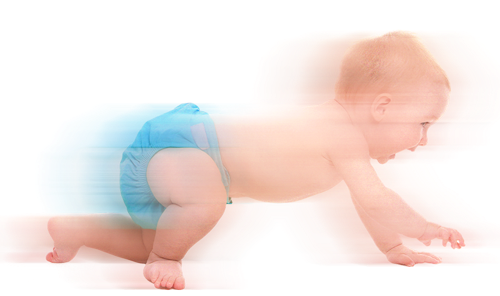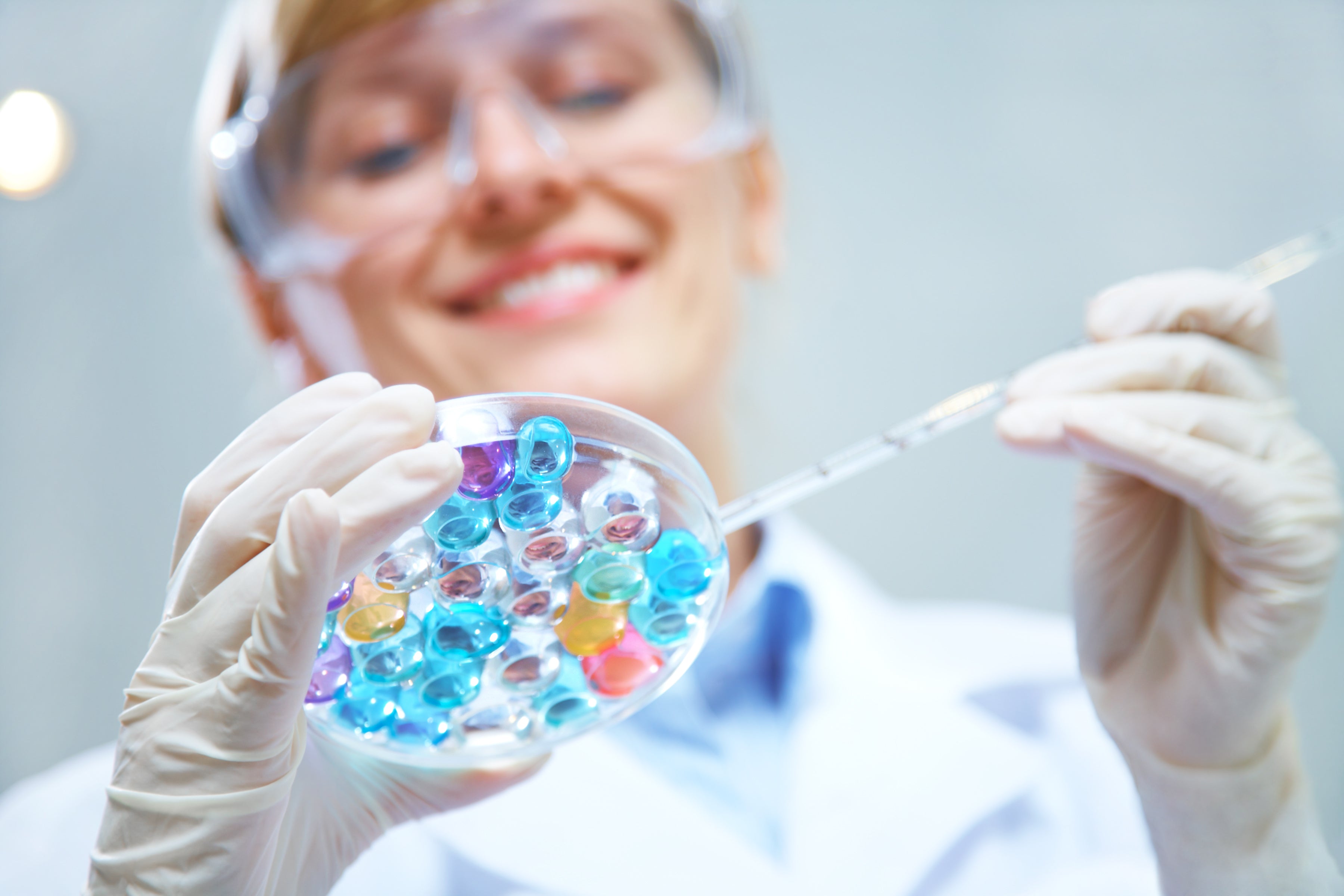Team Effort
Improve your chances of pregnancy together.
Fertility is a shared journey. ANDUIXX gives men the ability to join in and be an active part together with their partner and healthcare professional to maximize the chances of conception. ANDUIXX contributes to a normal sperm quality by improving TMSC and sperm morphology, thereby increasing the chances of fertilizing the egg successfully¹ʼ². With ANDUIXX, men can contribute to their sperm quality, fertility and reproduction and take an active part in the couple’s IVF experience*.
Total motile sperm count (TMSC) and sperm morphology are key factors influencing pregnancy rates. Higher TMSC and normal sperm morphology are associated with increased chances of natural conception and success in assisted reproductive techniques (ART). Better sperm morphology or higher TMSC can increase the likelihood of fertilization and pregnancy rates²ʼ³ʼ⁴ʼ⁵ʼ⁶.
Since ANDUIXX significantly improves total motile sperm count (TMSC) and sperm morphology, scientific research suggests that it should also impact pregnancy success rates⁶. This is currently being examined in an ongoing observational study. While the full data set is not ready yet, the available results are exciting, and we look forward to sharing the complete findings with you soon.

Your IVF-Center is a Crucial Partner
IVF-Centers play a vital role in guiding couples through their fertility journey. ANDUIXX gives IVF-experts a clinically proven, innovative option to improve sperm quality, thereby helping to increase the effectiveness of fertility treatments. High TMSC and morphology are directly linked to higher fertilization rates and higher embryonal quality, thereby setting up couples for a smoother way to parenthood.²𝄒⁹𝄒¹⁰
Scientifically Backed
ANDUIXX contributes to a normal sperm quality
ANDUIXX is an innovative and patented solution developed in collaboration with fertility professionals to address male fertility. ANDUIXX improves many sperm parameters, most importantly, Total Motile Sperm Count (TMSC) and sperm morphology, thereby contributing to a normal sperm formation.¹
TMSC
+Sperm Morphology
↳Pregnancy rate after ART

TMSC
+Sperm Morphology
↳Pregnancy rate after ART

90
Days of Treatment
732%
Total Motile Sperm Count
144%
Sperm Morphology
Science and Results. TMSC increased by 732% (p < 0.001) and sperm morphology improved by 144% (p ≤ 0.001) after taking ANDUIXX for 90 days; statistically highly significant enhancements in sperm quality.
TMSC is a better predictor of fertility success than total sperm count alone, as it measures motile sperm capable of fertilizing an egg².
Sperm morphology – the percentage of normally shaped sperm – has been proven to correlate with higher pregnancy success rates³𝄒⁴𝄒⁹.
These two parameters alone or in conjunction with the WHO criteria, provide a reliable assessment of male fertility.
Take the next step together with your IVF-Center
Speak to your IVF center about ANDUIXX today, and ask for a referral code to receive a discount on your purchase. If your IVF center is not yet listed in our database, please ask them to register. Together, with your partner and IVF-center, you can improve your fertility and bring your dream of starting a family closer to reality.

Take the next step together with your IVF-Center
Speak to your IVF center about ANDUIXX today, and ask for a referral code to receive a discount on your purchase. If your IVF center is not yet listed in our database, please ask them to register. Together, with your partner and IVF-center, you can improve your fertility and bring your dream of starting a family closer to reality.





